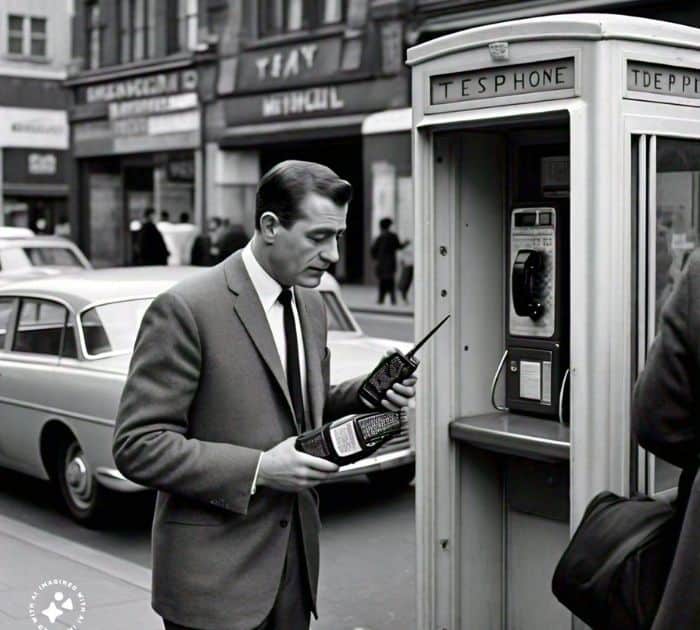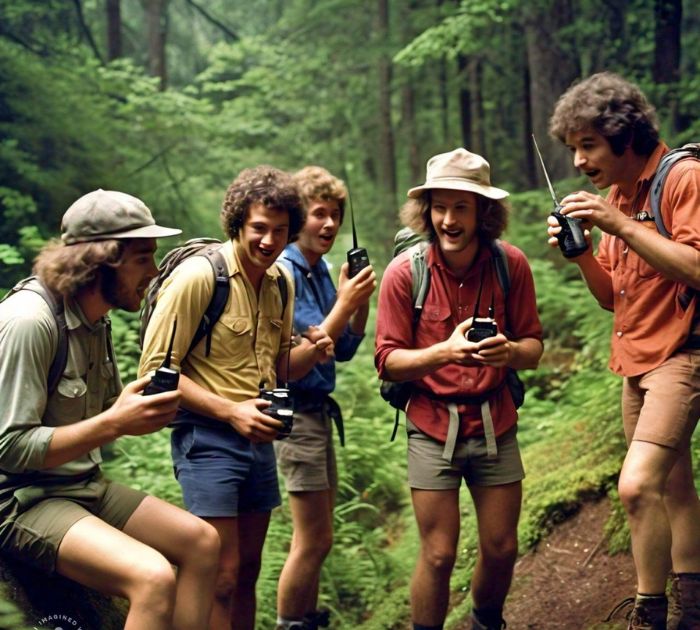Have you ever wondered when were walkie talkies invented? Those handy devices that let you stay in touch with friends and family over short distances have a rich history that spans over eight decades. From their origins in World War II to their modern uses in various fields, walkie-talkies have come a long way. Let’s dive into their fascinating story!
Contents
- 1 The Early Days: World War II and the First Radios
- 2 The First Commercial Walkie-Talkies
- 3 The 1950s and 60s: Walkie-Talkies Go Mainstream
- 4 The 1970s and 80s: Improved Technology and New Features
- 5 Modern Walkie-Talkies: Digital and Beyond
- 6 Today, walkie-talkies are used in various fields, including:
- 7 Fun Facts and Trivia
- 8 The Future of Walkie-Talkies
- 9 Some of the latest developments in walkie-talkie technology include:
- 10 FAQs
- 11 Conclusion
The Early Days: World War II and the First Radios

The first walkie-talkie-like devices were developed during World War II by the United States Army. In the early 1940s, the Army needed a portable, handheld radio that could facilitate communication between troops in the field. The result was the “Handie-Talkie,” a bulky device that weighed around 5 pounds and had a limited range of about 1 mile.
The Handie-Talkie was first used in 1943 during the North African Campaign and later in Europe. It was a game-changer in military communication, allowing soldiers to coordinate attacks and respond to threats more efficiently. The device was operated by a team of two soldiers, one carrying the radio and the other carrying the battery pack.
The First Commercial Walkie-Talkies

After the war, the technology improved, and the first commercial walkie-talkies were introduced in the late 1940s. These early devices were mainly used by professionals like police officers, firefighters, and construction workers. They were still relatively large and expensive, but they marked the beginning of a new era in portable communication.
One of the first commercial walkie-talkies was the Motorola HT-1, released in 1947. It was a bulky device that weighed over 3 pounds and had a range of about 5 miles. Despite its size and cost, the HT-1 was a groundbreaking device that paved the way for modern walkie-talkies.
The 1950s and 60s: Walkie-Talkies Go Mainstream

The 1950s and 60s saw a significant increase in the popularity of walkie-talkies. They became smaller, more affordable, and widely available to the general public. This was largely due to advances in transistor technology, which allowed for smaller, more efficient devices.
Walkie-talkies became a staple in various industries, including public safety, transportation, and outdoor recreation. They were also used in the 1960s by NASA during the Apollo missions to facilitate communication between astronauts and mission control.
The 1970s and 80s: Improved Technology and New Features

The 1970s and 80s saw significant improvements in walkie-talkie technology. Devices became smaller, lighter, and more powerful, with increased range and clarity. New features like push-to-talk buttons, earpieces, and belt clips made walkie-talkies more user-friendly and convenient.
This period also saw the introduction of new frequencies and channels, allowing for more efficient use of the radio spectrum. The Federal Communications Commission (FCC) established guidelines for walkie-talkie use, ensuring that devices operated within designated frequency ranges and power levels.
Modern Walkie-Talkies: Digital and Beyond
In the 1990s, walkie-talkies underwent a significant transformation with the introduction of digital technology. Digital walkie-talkies offered improved clarity, increased range, and additional features like encryption and group calling.
Today, walkie-talkies are used in various fields, including:
– Public safety (police, firefighters, emergency responders)
– Outdoor recreation (hiking, camping, skiing)
– Industry (construction, manufacturing, logistics)
– Healthcare (hospitals, emergency services)
– Education (schools, universities)
Modern walkie-talkies are smaller, lighter, and more powerful than ever before. They often feature advanced capabilities like GPS tracking, voice activation, and compatibility with smartphones and other devices.
Fun Facts and Trivia
– The first walkie-talkie call was made in 1940 by Alfred J. Gross, an American inventor who developed the first handheld radio.
– Walkie-talkies were initially called “handie-talkies” because they were designed to be held in one hand.
– The first commercial walkie-talkie was the Motorola HT-1, released in 1947.
– Walkie-talkies were used in the 1969 moon landing to facilitate communication between astronauts Neil Armstrong and Edwin “Buzz” Aldrin.
– The first digital walkie-talkie was released in 1993 by Motorola, featuring a digital signal and improved clarity.
The Future of Walkie-Talkies
As technology continues to evolve, walkie-talkies are becoming even more advanced. Modern devices feature improved range, clarity, and additional features like GPS tracking, voice activation, and compatibility with smartphones and other devices.
Some of the latest developments in walkie-talkie technology include:
– Long-range walkie-talkies that can communicate over distances of up to 50 miles
– Waterproof and shock-resistant devices for use in harsh environments
– Walkie-talkies with built-in cameras and video capabilities
– Devices with advanced encryption and security features for secure communication
FAQs
Who invented the two-way radio?
Alfred J. Gross, an American inventor, is credited with inventing the first two-way radio, also known as the walkie-talkie, in 1937.
Did they have walkie-talkies in the 1940s?
Yes, walkie-talkies were first used during World War II in the 1940s. The US Army introduced the first handheld walkie-talkie, the SCR-536, in 1941.
When did the army start using walkie-talkies?
The US Army started using walkie-talkies in 1941, during World War II. The SCR-536 was the first handheld walkie-talkie used by the military.
Are walkie-talkies safe?
Walkie-talkies are generally safe to use. However, like any device that emits radiofrequency energy, they do pose some health risks related to radiofrequency radiation exposure. To minimize risks, users should follow proper usage guidelines and precautions.
How far can two-way radios transmit?
The transmission range of two-way radios, also known as walkie-talkies, varies greatly depending on the device’s power output, frequency, and environmental conditions. Typical ranges include:
Handheld walkie-talkies: 1-5 miles (1.6-8 kilometers)
Mobile walkie-talkies: 5-15 miles (8-24 kilometers)
Base stations: up to 50 miles (80 kilometers) or more
Note: These ranges are approximate and can be affected by terrain, buildings, and other factors.
Conclusion
From their origins in World War II to their modern uses in various fields, walkie-talkies have come a long way. These handy devices have revolutionized communication, enabling people to stay in touch over short distances.
As technology continues to advance, it’s exciting to think about what the future holds for walkie-talkies. Will they become even smaller and more powerful? Will they integrate with other devices and technologies? One thing is certain – walkie-talkies will continue to play a vital role in communication, whether in everyday life or in critical situations.
So next time you use a walkie-talkie, remember the rich history and evolution behind this incredible device. From the battlefields of World War II to the modern era of digital communication, walkie-talkies have come a long way – and they’re here to stay!
